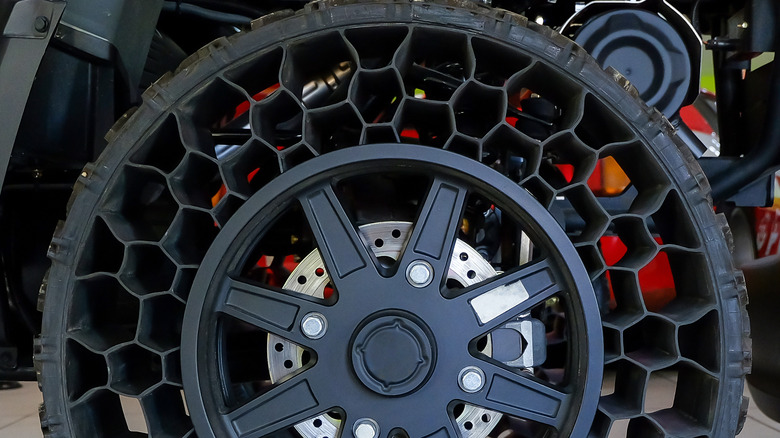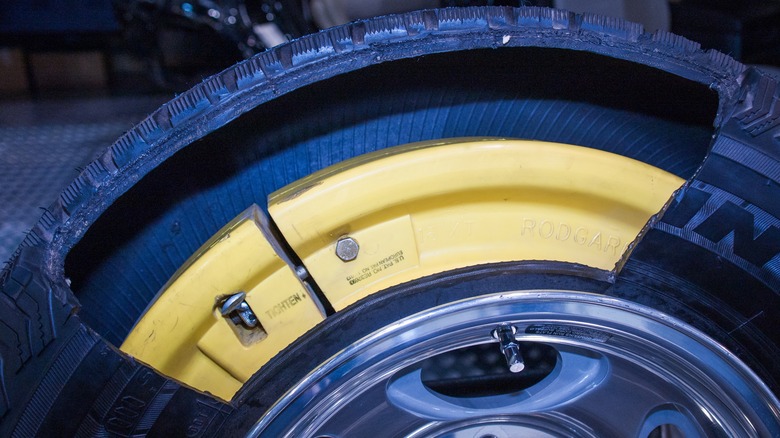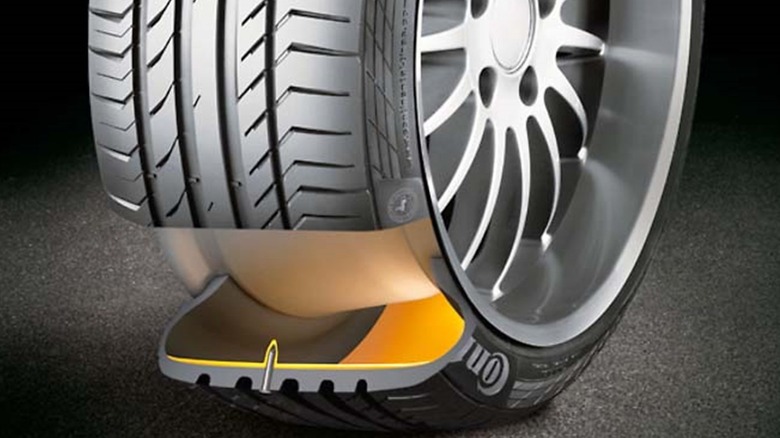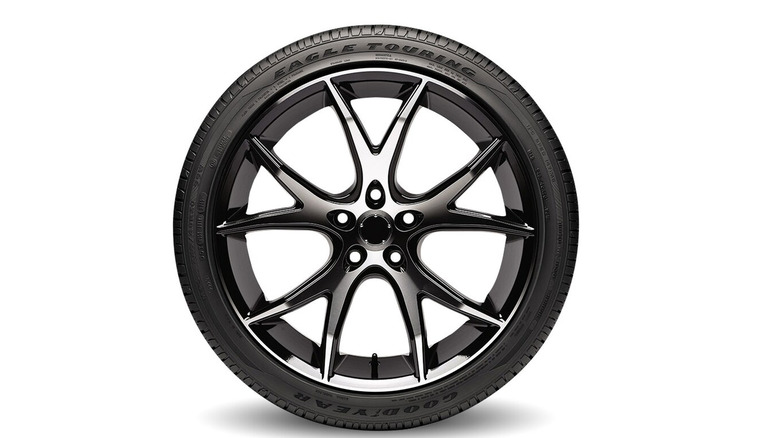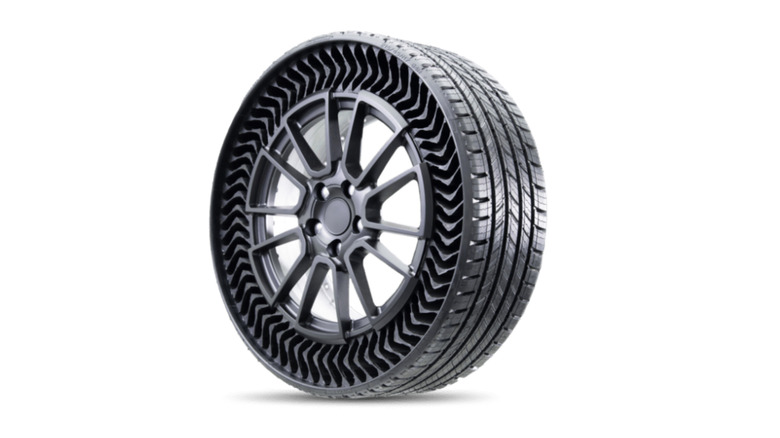How Do Bulletproof Tires Work?
We may receive a commission on purchases made from links.
Bulletproof tires are important in a variety of security situations, and not just for military personnel or political leaders. These skins will keep you moving even after all of the air has escaped from the tire. If you're the kind of person likely to buy a custom-made armored Lexus GS550, you might want to fit it with bulletproof tires.
To what degree can a tire take a round and keep going? Unlike with plates for armored vests, there is no graduated rating for bulletproof tires in the United States. In Europe, the 25-nation FINABEL standard for tires on combat vehicles requires them to be able to safely travel up to 100 kilometers on the road or two hours off-road with any degree of damage. Those tires are often made of Kevlar or rubber up to 10 times thicker than a regular tire, and sometimes also an insert to drive on if the tire decompresses. Many of these tires also have belted metal reinforcements as well. There are other types of tire that can be considered bulletproof to a degree, namely self-sealing and self-supporting tires. However, Michelin thinks the future of bulletproof tires might be to go airless from the start. Here's a rundown on the different types of bulletproof tires.
Auxilliary support systems
Auxiliary supported run-flat tires do not rely on the tire itself to maintain its integrity when it loses air pressure. Instead, arched blocks or rings are attached to the wheel to provide a surface to drive on. The attachment gives the best chance of being able to get away after being shot, as there is a solid connection between the wheel and the road. Also, even if the tire is shredded, the auxiliary should still be fully intact, as it is a separate unit.
The main drawback to auxiliary supported run-flat tires is that they are heavier than self-sealing or self-supporting tires. The result is a harsher ride, poorer fuel economy, and longer braking distances. On the other hand, auxiliary supported tires are more stable on the road than self-supporting tires, and the wheels won't cut into the tire or road for as long as the inner rings maintain their structural integrity.
Self-sealing tires
Self-sealing tires have been around for a long time. They weren't a specialty item, either — Sears used to sell them in the 1960s. The idea is that a layer between the tire and the air inside stretches and hardens when punctured, thus keeping the air in. Unlike an inner tube, the self-sealing layer is an integral part of the tire itself.
There are some advantages to self-sealing tires, but they have their limitations. They don't weigh much more than regular tires, and ride comfort and handling are comparable as well. However, they only seal properly with relatively small punctures, and the object needs to penetrate along the tread and not on the sidewall. Curb impacts and deep punctures can also overcome the tire's ability to self-seal. In other words, bullets penetrating from the side, especially at an angle, stand a better chance of compromising the tire than one hitting it directly on the tread. These tires are more bullet-resistant than bullet-proof.
Self-supporting run-flat tires
Self-supporting run-flat tires were invented in the 1930s by Michelin. They used a separate inner tube to support the vehicle's weight if the tire lost air. These days, self-supporting tires are made with reinforced treads and sidewalls to hold the weight of the vehicle. You can still drive on them with no air inside, albeit slowly and only for a limited distance. Military and security vehicles often use these tires, and FINABEL-rated combat tires can take five 7.62mm rounds in the sidewall and two in the tread at 30m (98 feet) and still ride for 100 km (60 miles).
Self-supporting tires are heavier than regular car and light truck tires. Ride quality suffers, too, as the stiffer sidewalls transmit more bumps. Another issue that because self-supporting tires are designed to run without air, it can be difficult to see if the pressure drops for some reason. Frequent checking or an air pressure monitoring system is highly recommended with these tires. However, BMW gives the option of ordering its non-electric cars with run-flat tires, and you can buy tires with this feature like the Pirelli P Zero from Amazon. For more information, check out our guide to run-flat tires.
Airless tires
The next generation of tires built to come under fire is the airless tire. Solid tires, such as those used on many lawn mowers, aren't an option for cars and trucks as the ride would be too harsh and they're subject to heat and road damage. Manufacturers such as Michelin have been working on metallic and rubber open-configuration, airless tires for passenger car use.
In 2019, Michelin introduced the Uptis (shown above) to take tires into their next phase of evolution. The Uptis is 3-D printed and uses recycled and biodegradable materials — including what Michelin describes as a 'resin embedded fiberglass' — to reduce manufacturing waste. Michelin says this tire will be lighter and far more resistant to damage than traditional tires. The Uptis was supposed to be available in 2024 after 12 years of development and testing, but it hasn't hit the market yet.
